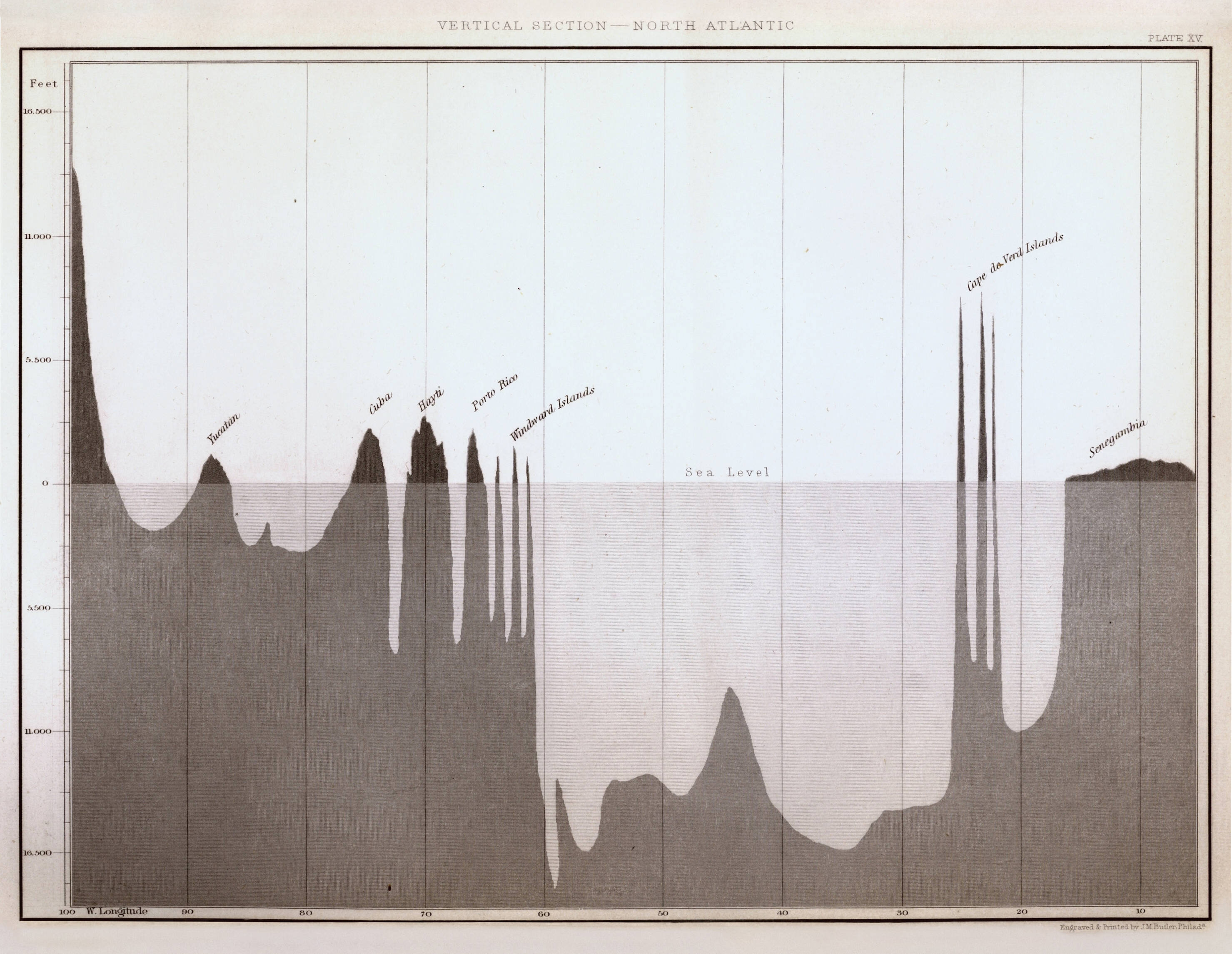
What this pioneering oceanographer saw in the Ocean
Our new book illustrates how Matthew Fontaine Maury unlocked the mysteries of the Atlantic
Ocean is filled with watery works of wonder. This new book, subtitled Exploring the Marine World, reproduces more than 300 incredible sea images.
There are plenty of contributions from well-known artists, such as Damien Hirst, David Hockney, Gustave Courbet, Claude Monet, JMW Turner and Vincent van Gogh, which seem to emphasise the awe and wonder many of us experience when contemplating the sea.
Yet there’s a lot more to the book than these art works. Ocean also contains religious totems, newspaper clippings, advertisements, maps and botanical drawings, among many other types of imagery.
The scientific inclusions are particularly enlightening, as these often seem to solve the mysteries of the ocean without lessening our numinous admiration.
Take the work of Matthew Fontaine Maury, a 19th century American naval officer and pioneering oceanographer. “When an accident forced him to give up his seagoing naval career, Maury was put in charge of the Depot of Charts and Instruments (precursor to the US Naval Observatory) in 1842,” explains our new book. “There he discovered thousands of old ships’ logs, from which he gathered details of currents and winds that he made available for the first time to all ships’ captains.
“Maury’s contributions to oceanography also included the earliest profile of the North Atlantic Basin. Between 1849 and 1853, he sent survey ships to make systematic depth soundings in the North Atlantic, creating the first map of the ocean basin, with zones shaded to show depths of 1,000, 2,000, 3,000, 4,000 or more fathoms (1 fathom = 1.8 m / 6 ft).
“In the chart shown above, Maury depicts a section of the North Atlantic, showing the elevation of various landmasses, including the islands of Cuba and Puerto Rico, relative to sea level. He conceded that there was conjecture in the map, but it nevertheless gave a general idea of the shape of the North Atlantic Basin.
“In the process, Maury discovered the submarine mountain range – now known as the Mid-Atlantic Ridge – on the ocean floor, naming it Dolphin Rise. It would later be shown to stretch the entire north-south extent of the ocean.”

Ocean
To learn more about Maury and many other ocean-going greats, order a copy of Ocean here.